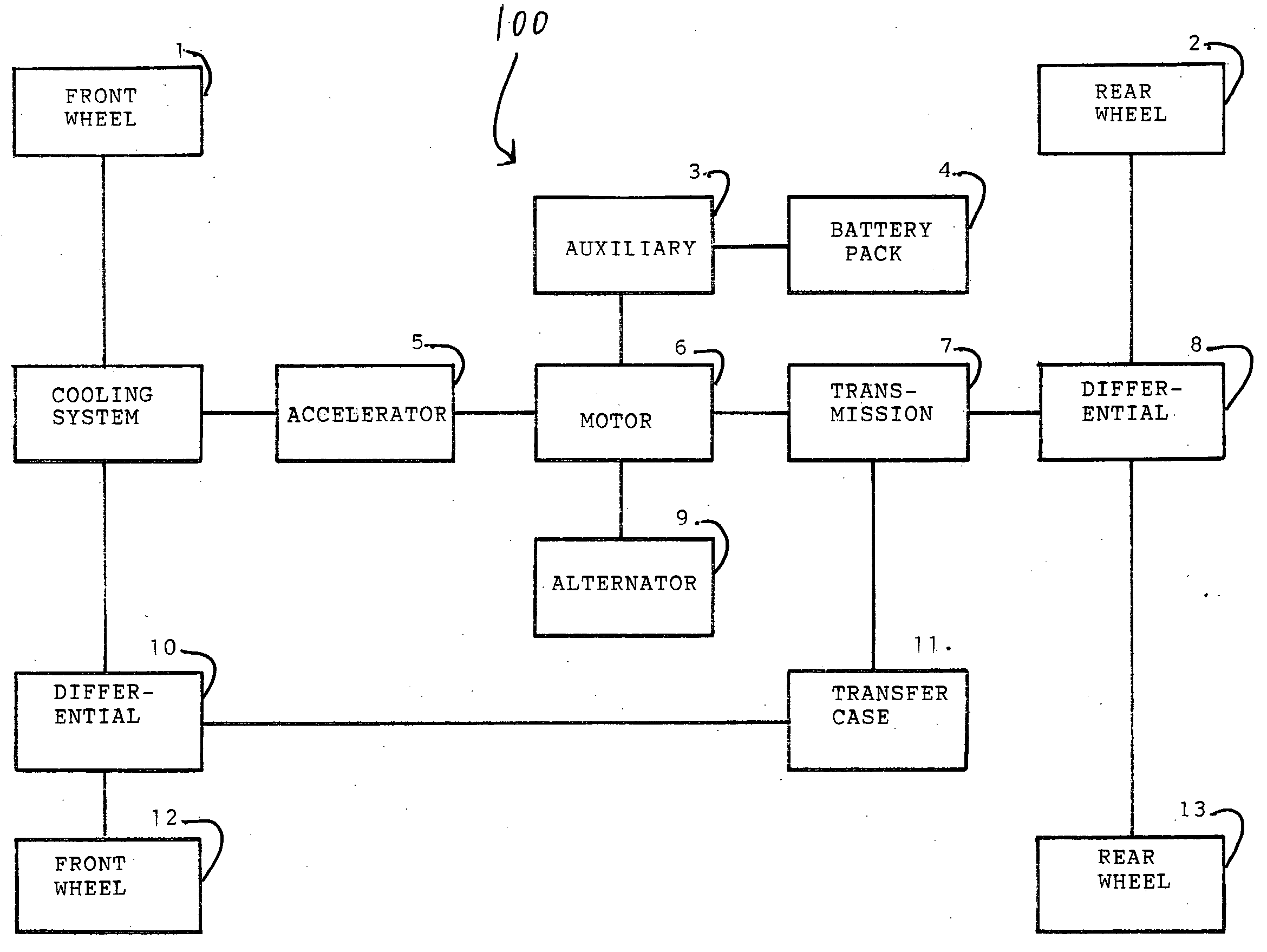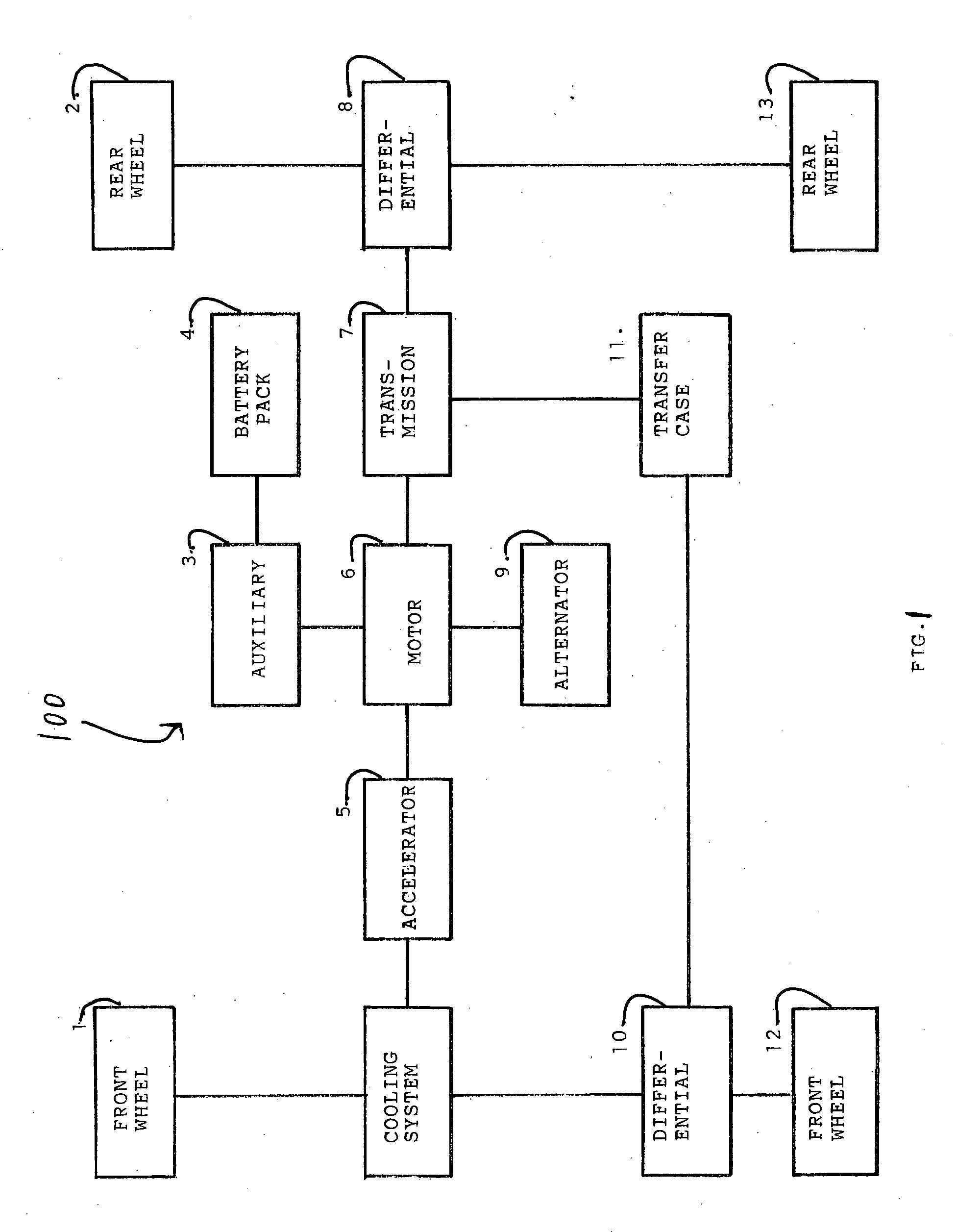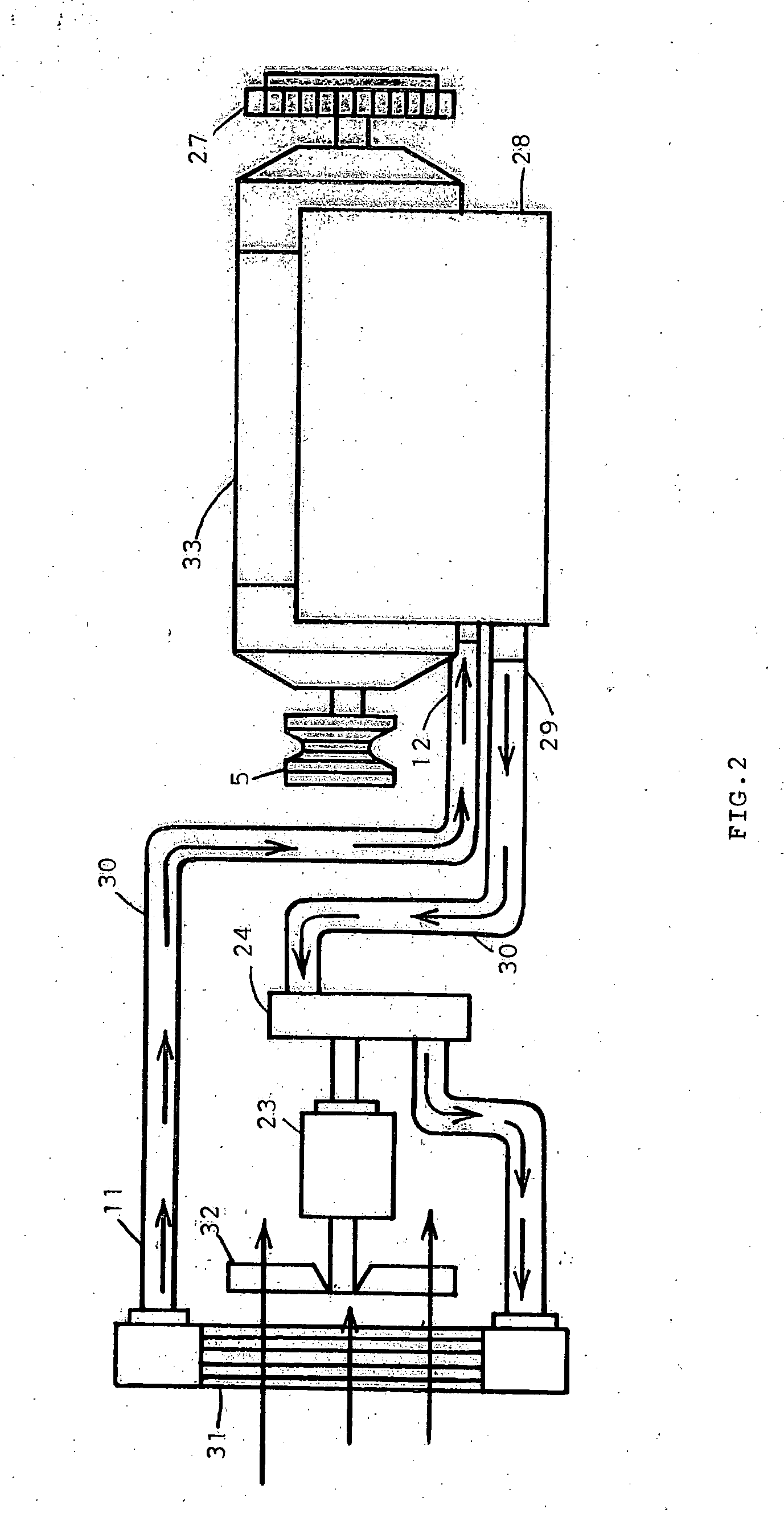All-wheel drive electric vehicle
a technology of electric vehicles and electric vehicles, applied in the direction of electric devices, battery/fuel cell control arrangements, electric devices, etc., can solve the problems of electric vehicles having to be charged on the road constantly, the road is also disadvantageous, and the typical drive is not possibl
- Summary
- Abstract
- Description
- Claims
- Application Information
AI Technical Summary
Benefits of technology
Problems solved by technology
Method used
Image
Examples
Embodiment Construction
[0031] The apparatus of the present invention will now be illustrated by reference to the accompanying drawings. The electric vehicle of the present invention has been assigned reference numeral 100 Other elements have been assigned the reference numerals referred to below.
[0032] It is noted that the terms “electric motor” and “electric drive motor” is used herein to denote the vehicle's motor that causes the vehicle to move. Any other reference to a “motor” is to one or more motors that are designed merely to operate particular limited parts within the vehicle such as the motor for the fan, i.e. the fan motor, or the motors associated with the legs, i.e. the leg motors, as described in further detail below.
[0033] As seen from FIGS. 1-6, the electric vehicle of the present invention is an all-wheel drive electric vehicle that runs on a road and on an electrified track. Certain parts of the vehicle 100 are standard and well known. For example a chassis, a driving wheel and other we...
PUM
 Login to View More
Login to View More Abstract
Description
Claims
Application Information
 Login to View More
Login to View More - R&D
- Intellectual Property
- Life Sciences
- Materials
- Tech Scout
- Unparalleled Data Quality
- Higher Quality Content
- 60% Fewer Hallucinations
Browse by: Latest US Patents, China's latest patents, Technical Efficacy Thesaurus, Application Domain, Technology Topic, Popular Technical Reports.
© 2025 PatSnap. All rights reserved.Legal|Privacy policy|Modern Slavery Act Transparency Statement|Sitemap|About US| Contact US: help@patsnap.com



